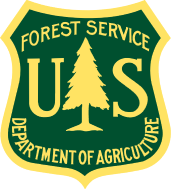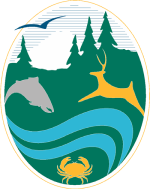These two letter surface condition codes signify what the conditions are like on the snow. We endeavor to report conditions consistent with terminology described below. However, any descriptions of surface conditions are subjective, and are determined as best as possible by our snow reporter. Please know that this is a mountain environment, and conditions can and do change rapidly. Any description of surface conditions listed on the website should not be taken as gospel. Think of it as our best educated estimate.
BS= BARE SPOTS
Areas of exposed underlying trail surface, NOT covered with sufficient amounts of any form of snow, ice or other skiable material. No skier should attempt to ski over or through any bare spot or spots.
CO= CORN SNOW
Large ice-like granules, which are loose during above-freezing temperatures and which freeze together during below-freezing temperatures. Corn snow is usually a product of the above / below freezing cycle of temperatures typical of spring days. Large ice-like granules which remain frozen together in extended cold periods, or chunks of ice created by incomplete grooming or icy surfaces are not characteristic of corn snow.
FG= FROZEN GRANULAR
Granular snow which was once wet and which has frozen together forming a rather solid or crusty-textured surface. It can return to loose granular after thawing or being worked by a grooming machine, or from the effects of skier traffic breaking up the crust. Frozen granular snow will support a ski pole stuck into it. However, if the pole makes ice chips and the surface will not support the pole, the surface is ICY.
HP= HARD PACK
Hard pack snow is a dense, compressed snow condition harder than packed powder and softer than ice.
IP, IS= ICE PATCHES, ICY SURFACE
Ice represents a hard, glazed surface usually created by freezing rain, or old surface snow melting and quickly refreezing again, or by ground water seeping up into the snow and freezing. Also may describe a very wet surface that has been skied into a smooth surface while above-freezing temperatures are existent and then rapidly dropping temperatures occur. When broken, ice breaks into chunks rather than granules. Patches describe localized occurrences of ice; surface describes a more prevailing icy condition on the slope.
LG= LOOSE GRANULAR
Loose granules similar to rock salt, usually formed after powder snow thaws, refreezes and crystallizes; or an accumulation of sleet. Loose granular also may characterize surface conditions produced by machine conditioning of frozen granular or icy surfaces.
MG= Machine Groomed
Freshly groomed ski runs compacted by a snowcat.
P= POWDER
New snow generally of dry and fluffy consistency. Will not make a snowball easily.
PP= PACKED POWDER
Loose powder snow compacted by rollers, drags or other mechanical apparatus or by skier traffic to a state which leaves little air space between particles. It is no longer fluffy, but it is not so extremely compacted that it is hard and icy.
SC= SPRING CONDITIONS
This term is used to characterize the wide variety of surface conditions which results from the alternate freezing and thawing of snow cover in spring weather. This term is used in place of other terms when the usual surface descriptions cannot accurately or completely describe the situation, that is, when no single surface type covers at least 50% of the skiable surface of a trail.
TC= THIN COVER
Indicates that the cover that currently exists will decline in quality due to skier traffic an may break through to the underlying trail surface. Thin Cover indicates that Bare Spots are anticipated to develop in the area during the day.
V= VARIABLE
A wide variety of conditions which can not accurately or completely be describe using usual terminology, such as when no single surface type predominates.
WG= WET GRANULAR
loose or frozen granular snow which has become wet and soft after a thaw or from a rainfall.
WP= WET POWDER
Powder snow that is wet when it falls (you can easily make a snowball), or dry powder that becomes wet as the temperature rises above freezing or is dampened by rain.
Get powder alerts or just keep track of what’s going on at Mission Ridge.
7500 Mission Ridge Rd
Wenatchee, WA 98801
Snowline: (509) 663-3200
Phone: (509) 663-6543
Email: info@missionridge.com


New Mission LLC operates Mission Ridge Ski and Board Resort under special use permits from the U.S. Forest Service and the Washington Department of Fish and Wildlife.